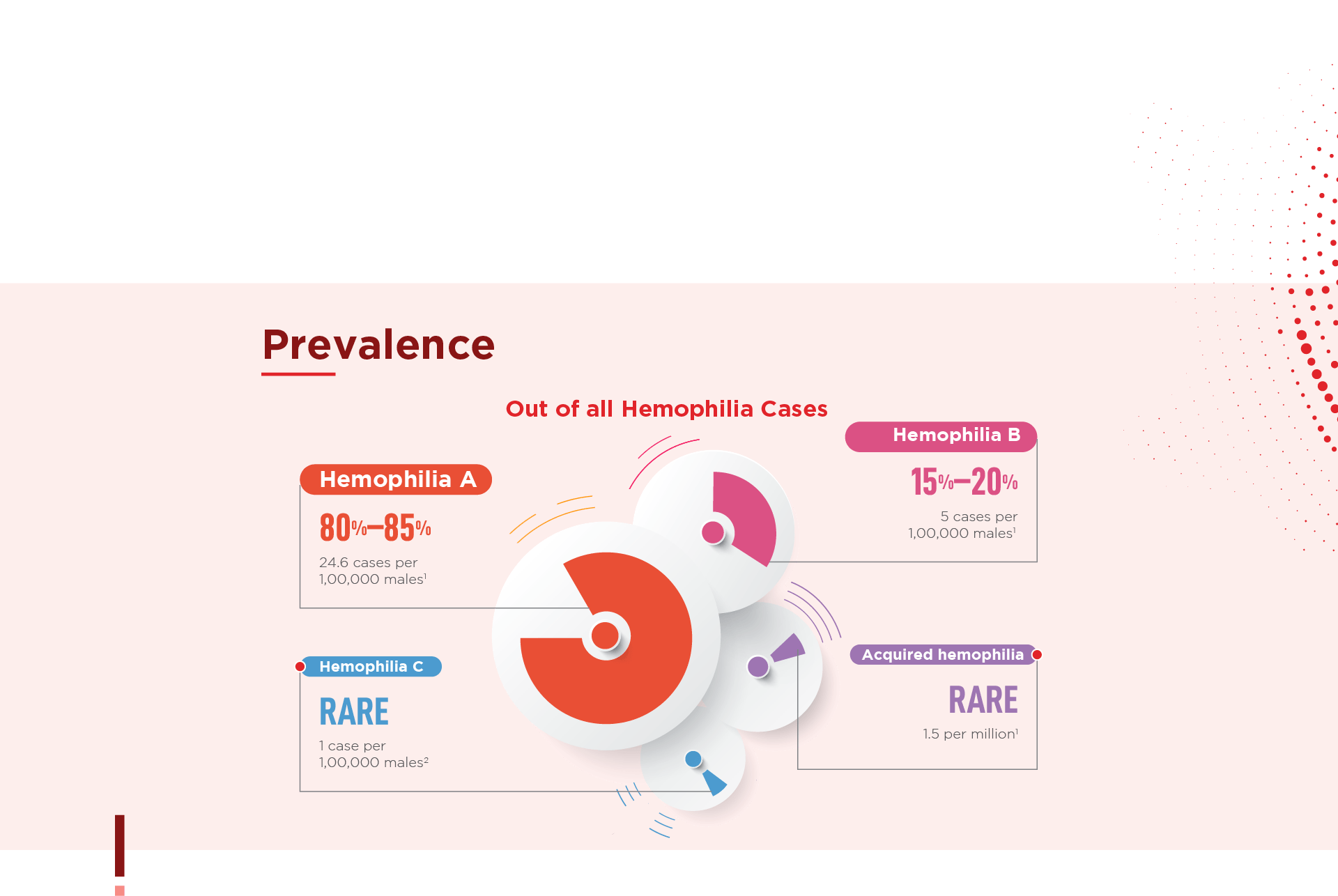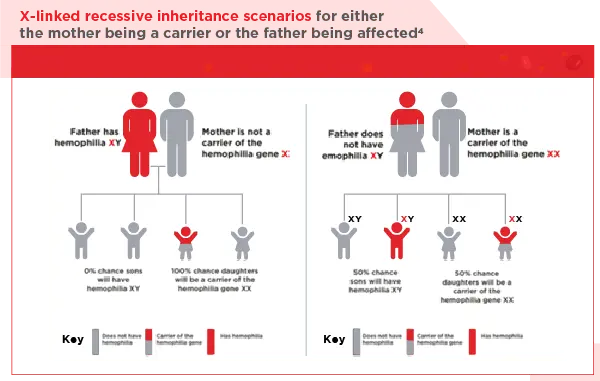By accepting this disclaimer and continuing on this portal, I hereby confirm that I am a registered healthcare practitioner and I am authorized as per applicable laws to access the content shared on this portal. I acknowledge that the material and information shared on this portal is meant for limited access of a healthcare practitioners only and I will not share or distribute the confidential material and information shared with me on this portal with an unauthorized person. I confirm to not rely on the material and information shared herein and apply my independent medical judgement for assessing any patient.
KNOW
HEMOPHILIA

Hemophilia,
the RARE Disease¹
Their blood does not have a protein that acts as a clotting factor and helps control the bleeding.


Types of Hemophilia³
Our bodies depend on many types of proteins produced in the body to initiate blood clotting and to stop bleeding. Type of hemophila is based on the type of protein that the body either does not produce enough or is missing in the body.
The most common types are hemophilia A and hemophilia B. They are inherited and detected at early age.
 Hemophilia A
Hemophilia A (Classic Hemophilia) caused by a lack or decrease of clotting factor VIII
 Hemophilia B (Christmas Disease)
caused by a lack or
decrease of clotting
factor IX
Hemophilia B (Christmas Disease)
caused by a lack or
decrease of clotting
factor IX

Two other rare types, hemophilia C
& Acquired hemophilia

Hemophilia C (Rosenthal syndrome) occurs due to the deficiency of clotting factor XI
Acquired hemophilia is predominantly a disease of the elderly and is often associated with autoimmune disease.²

Hemophilia - A Genetic Disease
Common hemophilia i.e. Hemophilia A or B, is almost always due to a defect or mutation (change in structure) in one of the genes that provides instructions for making the clotting factor proteins needed to form a blood clot. This change or mutation can prevent the clotting protein from working properly or to be missing altogether.


Signs & Symptoms

The signs & symptoms of hemophilia A and B are the same:
- Big bruises
- Bleeding into muscles and joints
- Spontaneous bleeding (sudden bleeding inside the body for no clear reason)
- Prolonged bleeding after getting a cut, removing a tooth, or having surgery
- Bleeding for a long time after an accident, especially after an injury to the head
Bleeding into a joint or muscle causes:
- An ache or “funny feeling”
- Swelling
- Pain and stiffness
- Difficulty using a joint or muscle


People with hemophilia can bleed inside or outside the body. Most bleeding in hemophilia occurs internally, into the muscles or joints. The most common muscle bleeds occur in the muscles of the upper arm and forearm, the iliopsoas muscle (the front of the groin area), the thigh, and the calf. The joints that are most often affected are the knee, ankle, and elbow.


